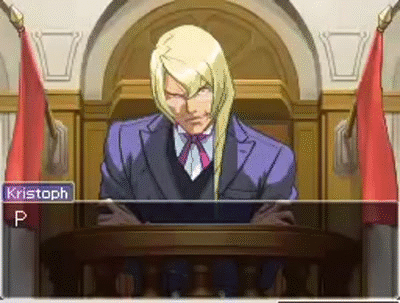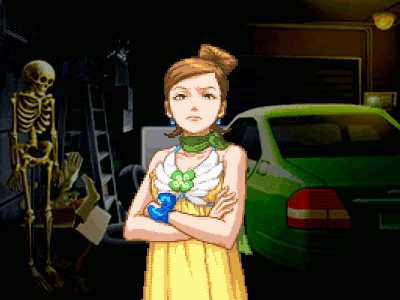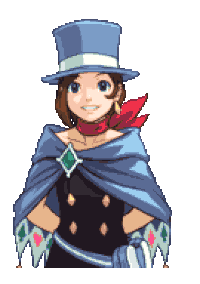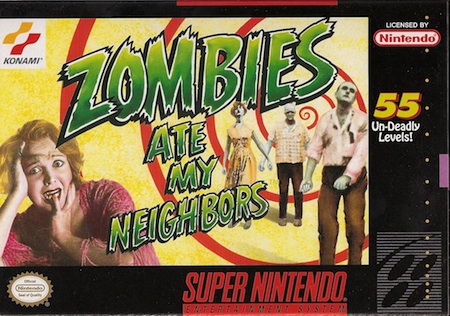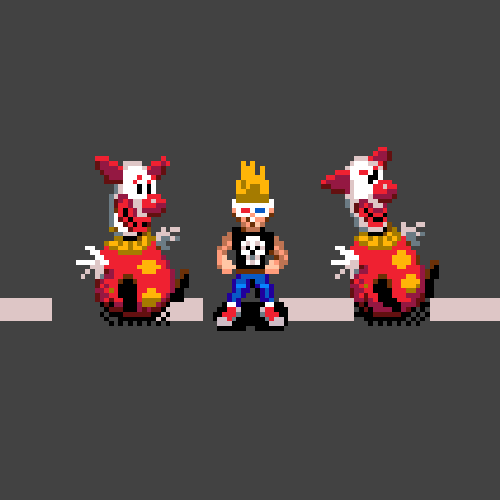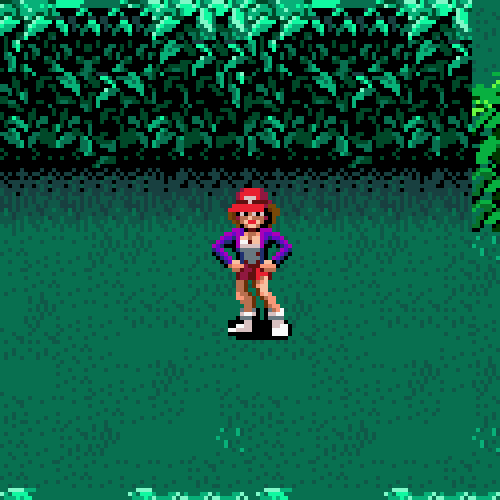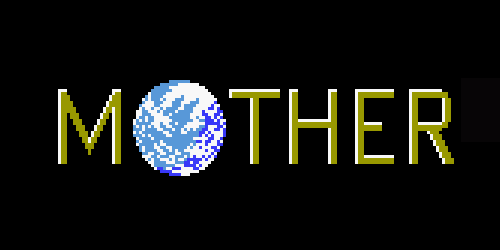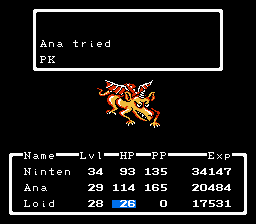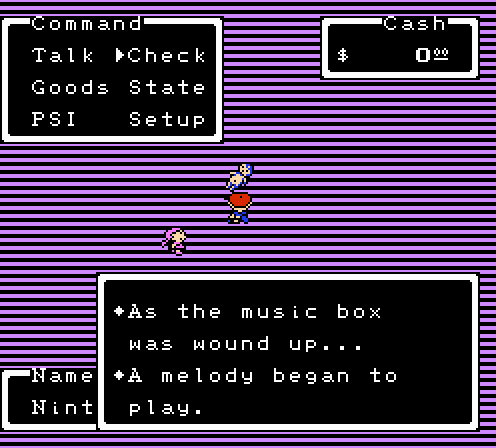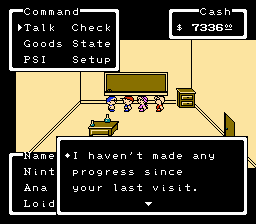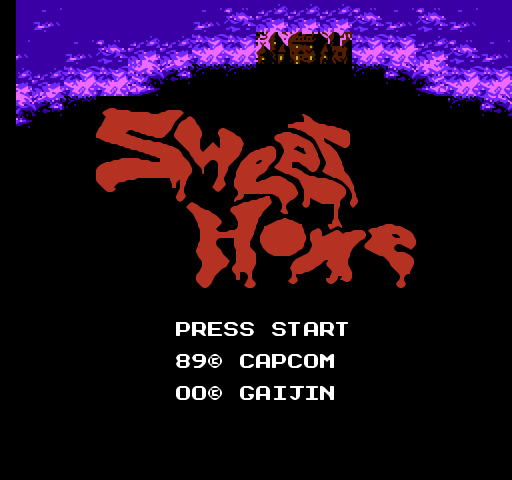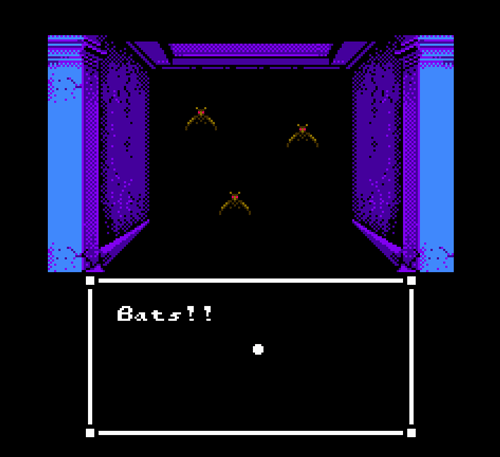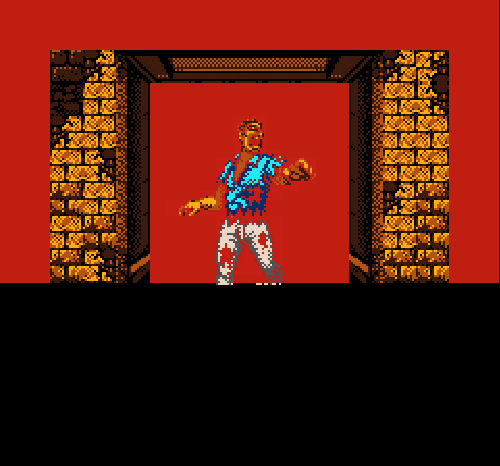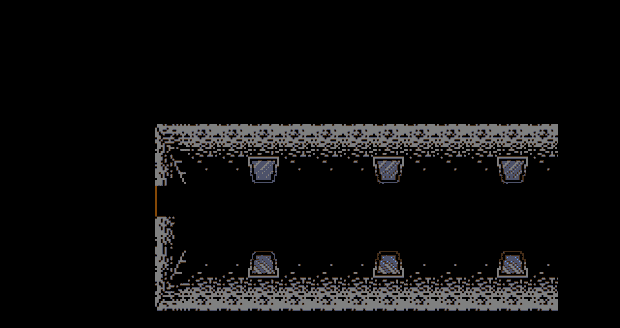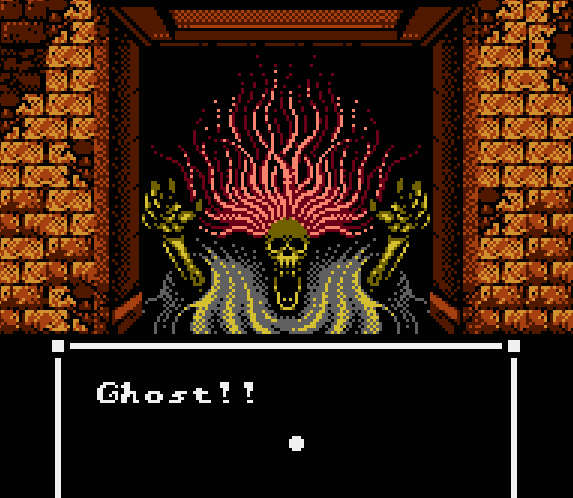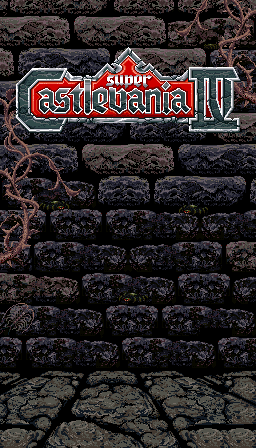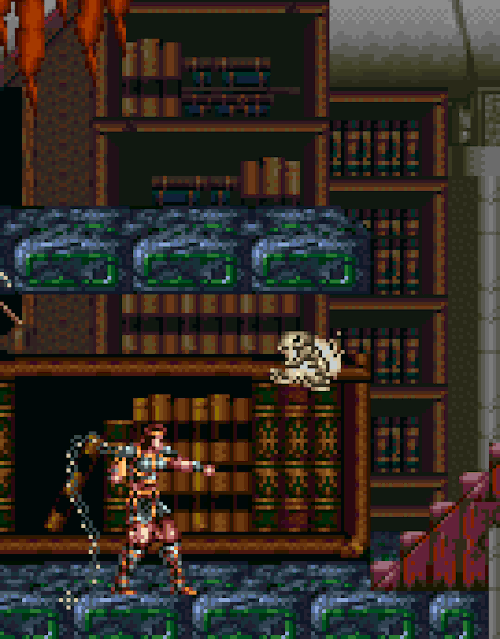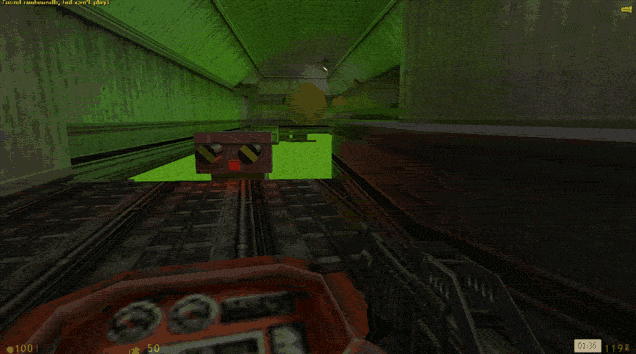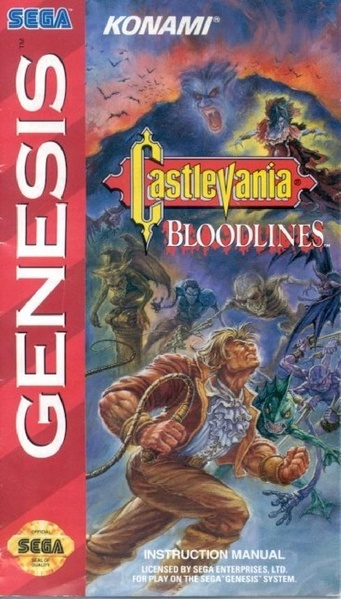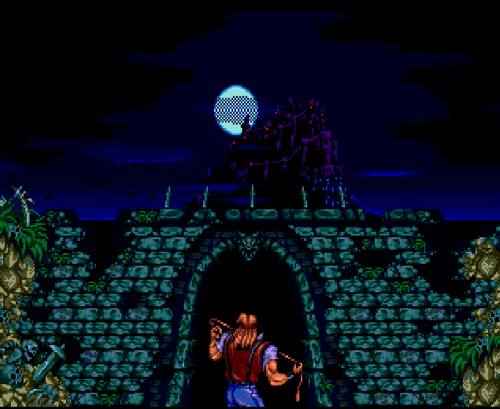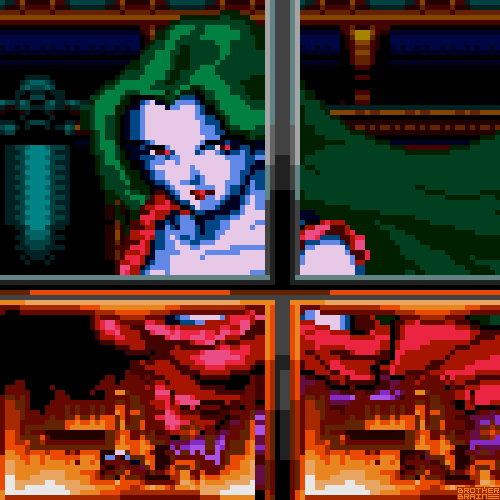Sweet Home
(Suito Homu)
Original Console: Nintendo Famicom
Original Release Date: December 15, 1989
Developer: Capcom
Plot: In 1959, an incident caused Ichirou Mamiya, a famed fresco artist, to hide many paintings he had created in his mansion. Mamiya later disappeared from public sight and was thought to have died. Thirty years later, an art restoration and documentary team of Kazuo (team director), Akiko (team medic and producer), Taro/Taguchi (team cameraman), Asuka (team restorer), and Emi (Kazuo's daughter), enter the presumably abandoned mansion to recover and reveal the frescos to the public. Immediately after entering the premises, a tremor shakes the house, causing debris to barricade and block the entrance to the mansion. A ghastly visage appears before them, the spirit of Mamiya Manor, Lady Mamiya. She chastises them for daring to enter her home and tells them that death awaits them in this place before disappearing. The group must now find an exit to the mansion and survive the tricks, traps, and monsters that lay abound in this place of residing evil.
9/10
Gameplay: Sweet Home is a survival horror RPG game for the Nintendo Famicom, based off the movie of the same name, which was released on January 21, 1989. The game is produced by the director of the movie, Juzo Itami, and directed by Tokuro Fijuwara, most notable for his work in other Capcom games such as
Bionic Commando,
Ghosts & Goblins,
Mega Man 2,
Duck Tales, and of course the semi-remake of
Sweet Home,
Resident Evil. The game tested the limits of a concept that was rarely attempted at the time: a true attempt at a horror aesthetic with a serious subject as its narrative. The only notable exceptions of the time were games like
SplatterHouse, which focused on grinding action, and
Chiller, which lacked a major narrative in favor of arcade gallery shooting. While many historians make claim that
Alone in The Dark, or
Clock Tower were the first survival horror games,
Sweet Home laid the groundwork for much of the genre before those games were even concepts.
The first mechanic introduced in
Sweet Home is the unique items that each character holds throughout the entire game. They each have a specific purpose and are considered important to beating the game. Kazuo has a lighter, which is useful for burning down certain obstacles and damaging specific enemies. Akiko is the medic of the party, able to cure certain ailments the others and herself come across, but she cannot restore health. Taro has arguably the least useful special item, his camera, but it's almost required to unlock the story that unfolds through the various frescoes in the manor. Asuka has the vacuum, which is used to remove glass obstacles and clean certain frescoes. Emi has arguably the second most important item in the game, and that is the skeleton key, which unlocks many of the rooms in the mansion. There are replacement parts in case of worst case scenarios, such as the second mechanic introduced into
Sweet Home.
The second mechanic introduced in
Sweet Home is the worst case scenario, permanent death. You heard that right, there is no reviving a character once they die. If they are dead, they remain dead for the rest of the game. No hospitals, no Phoenix Downs, no way to bring back the dead. Not all is lost, as there is a surplus of tonics that heals your characters back to full health if you use them on the party; a good idea would be to gather together everybody into one place during a battle (another mechanic I'll talk about in a bit), and use a tonic to heal everybody. However, there are only a set amount of tonics, and once you run out of tonics, that's it. There are no shops, and like
Resident Evil, items are scattered around the mansion to be collected, the same goes for weapons.
The third mechanic introduced to
Sweet Home is the party system, in which, of the five characters, at most only three can be in a specific party at one time. Usually, that means you have a team of 2 and a team of 3 characters in different areas of the mansion at one time, and there's different ways to customize your party. Do you want Kazuo and Akiko together, and place Emi, Taro, and Asuka together since most frescoes are hidden behind locked doors? Or do you put Kazuo, Akiko, and Emi together for story items, while Taro and Asuka work together finding frescoes? However, never have them too far apart, as status effects have different ways of striking a character, and sometimes Akiko being too far away is certain doom.
As an RPG,
Sweet Home does in fact suffer from random battle syndrome, but unlike many contemporary RPG games,
Sweet Home streamlines random battles for the benefit of the player. First off, you only ever face one enemy at a time, removing the need to worry about multiple enemies at once. Secondly, your characters always attack first, giving you a distinct advantage for setting the pace of the battle. A niche but well applied mechanic for battles is the ability to call for other characters to join the battle, in doing so, it pauses the battle and allows you to gain control of your other party for a brief period. You better be quick getting your party over to the others, as it's only a limited time before the fight's back on. You are also able to use items (an important part of the game), use pray points to deal damage or rescue a teammate from a monster's clutches, as well as run away from a fight should it prove too difficult. If your characters are low on health, using a tonic on hand will completely restore their health and pray points.
Sweet Home's weapon system is also an interesting concept, weapons have different stats that affect the attack ability of a character. There are two different types of attacks, physical and spiritual. Physical damage affects enemies such as bats, dolls, zombies, worms... anything really tangible in the game. Spiritual damage affects enemies such as wisps, ghosts, armor, and anything that is ghostly in appearance. Weapon types are knifes, clubs, axes (which Kazuo and Taro can only equip), spears, swords, and pitchforks, amongst other weapons. There are also sub-types of each weapon, ranging from lowly oak (in the case of knives, fruit), all the way up to shiny, which deals massive spiritual damage. The pitchfork is the strongest weapon in the game, and as a positive, there are two of them.
(Look familiar?)
As a precursor to the original
Resident Evil,
Sweet Home has tropes that were borrowed heavily by the 1996 masterclass. Item pickups and inventory management being two of the most well known gimmicks borrowed from
Sweet Home; puzzles and traps were also heavily borrowed by
Resident Evil. A good example of a trap in
Sweet Home is the dreaded sand pit trap; in which a character falls into a moving sand trap and it is up to another character to have a rope on hand to pull them up; failing to do so will lead to that character's death. Other traps are more simplistic in scope, but perhaps my favorite kind of trap is the wooden board trap. Several areas of the game are separated by ledges that require crossing, and using a wooden board makes it possible. Most of those wooden boards only work with five uses, however, and break easily. If you're character stands on a board when it breaks, they begin to fall to their death; simply switching to another character and using the "team" button rescues them from certain doom. You are given plenty of time to make the rescue, so
Sweet Home isn't completely unfair.
Overall,
Sweet Home developed concepts and tropes that many other games of the era never thought of, and mixed it in with its incredible narrative storytelling style to create an NES RPG experience that never feels like it overstays its welcome. The permanent death mechanic was something almost unheard of in RPGs at that point in time, and its horror aesthetic was truly only matched by
SplatterHouse, which came out the year before. It's a truly one of a kind game that invented many tropes of the survival horror genre. Fitting for the grandfather of survival horror.
10/10
Visuals: Sweet Home boasts one of the most visually striking designs of any NES game. Enemy designs are incredibly gruesome and creepy, character designs are simple, but iconic, and the mansion lay-out is absolutely fantastic as a back-tracky, intricate, complex maze of rooms. Perhaps my favorite monster design is the corpse/grave, which is a head and two hands coming out of the ground, constantly vomiting. The giant/maniac is also an amazing design, with pustules oozing slime from themselves. Some scenery is downright horrifying to see, in fact. It's the content of the story and the gore effects (aside from obvious legal issues), that kept this game from ever being allowed outside of Japan, which is a damn shame, because we in the West were robbed of a genuinely great game because of it. 10/10
Audio: Sweet Home's music is the work of one Junko Tamiya, famous for her work on
Bionic Commando as well as the arcade version of
Strider; She pulls no punches creating an atmospheric and disorientating soundtrack meant to create complete unease and displeasure every time you walk the halls of the haunted manor. "Central Lobby" is my favorite song of the entire soundtrack, as from the first beat, it's entirely uneasy and forthcoming in the atmosphere it drips upon your auditory sense. Other great tracks include "Eastern Garden", "Upper Floor", "Battle Theme", and "Fresco Theme" which is the equivalent to the
Resident Evil safe room themes. It's a great song that creates a safe, but sad feeling in the player. The sound design is great too, each attack has a sense of scope and it feels great to wail on enemies. Overall, an incredible sound design built not necessarily to be "good", but to play to the strengths of what the game is going for, and that's as good as you can ask in a game.
9/10
TL/DR Thoughts: Sweet Home is an utterly fantastic game by all accounts. One of the only NES RPGs worth really playing, and as one of the original survival horror games, it's incredible to see all the tropes that games like
Clock Tower,
Resident Evil, and
Silent Hill would utilize later on to create the genre. Definitely worth adding to your collection if you're not against the reproduction cartridge scene, and I'd say it's far and away superior to
Mother. I never have enough to say about
Sweet Home, but this should finally settle down the urge to tell everyone about it, at least for a while.
Final Grade: 9.5/10
